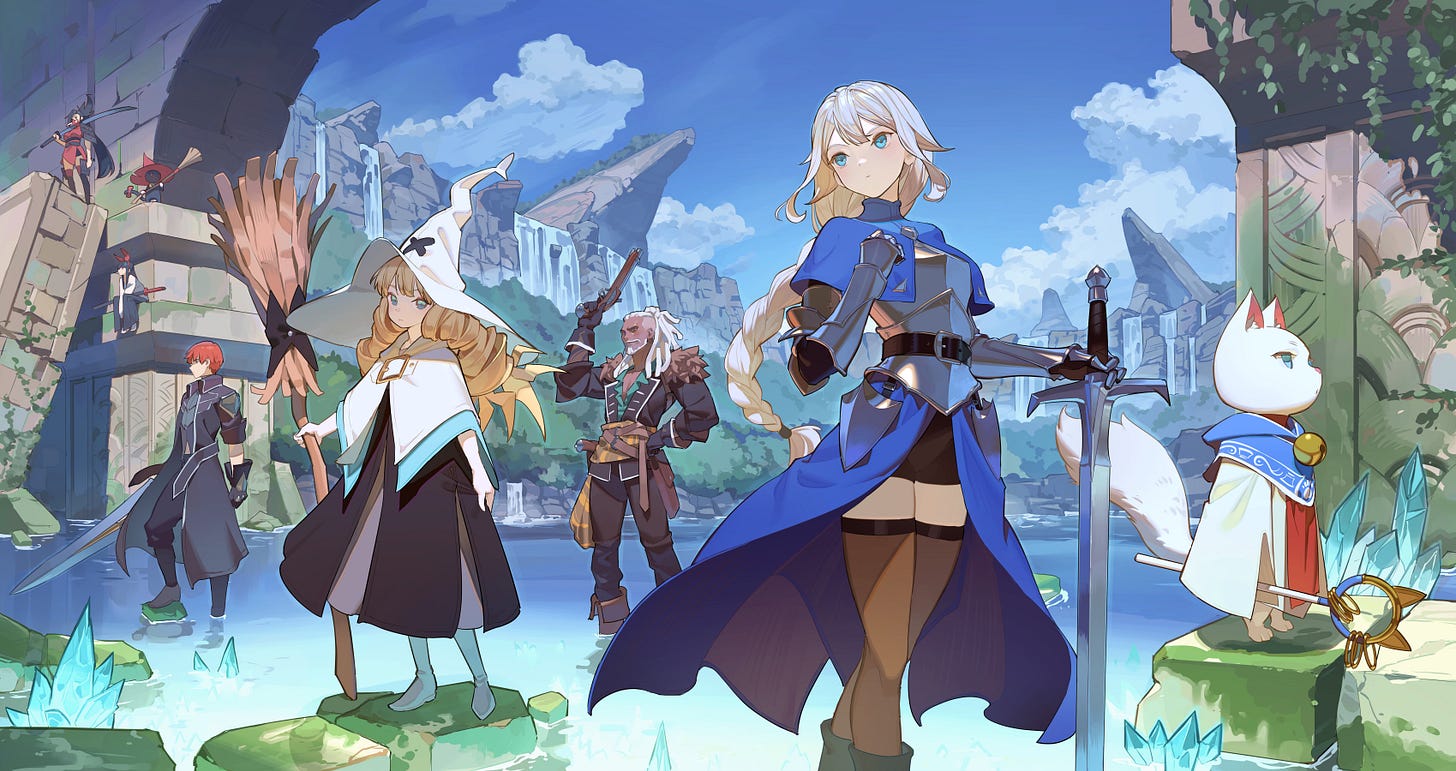Back in the day, regional differences in gamer wants and needs were pretty extreme. In many ways, they still are. Pricing, language localization, payment options, monetization preferences. Brazilian players convert more often but spend less and like to use prepaid game cards or mobile payments and normally require Portuguese localization, while German players convert less, spend more, can get by with English, and use credit cards or bank transfers. But players in both countries happily play the same kinds of games, more or less.
But the view east to west tends to be more stark. Differences in genre and art styles between Asian and western markets normally mean that very different games thrive. There are, of course, major exceptions to this, but the general rule of thumb is that players in Asia lean into RPG- and MOBA-style games and prefer more stylized art, while western audiences love shooters, sports and more literal animation. These preferences have often made it difficult for games to make the leap from one hemisphere to another.
Things are starting to change. The West has quickly become obsessed with Asian TV, movies, and, increasingly, games. And with that has come a sizable change in the appetite for art and genre styles that would feel more native to Asian markets, including anime.
Overseas revenue of the animation industry in Japan from 2012 to 2021
The reasons for this are vast and varied. Increased globalization and easy distribution for digital content are both major factors. But that in itself just makes things accessible, not necessarily taste-making. Gamers, however, have always been early adopters of technology, interactivity, and storytelling. Gaming culture had been at the forefront of the interest in the anime genre long before digital games and the wide use of the internet. Early consoles, including those from Nintendo and Sony (both Japanese companies), ushered in some games with stylistically more Asian designs and play styles. And the games were sometimes made using existing Japanese IP like Pokemon. Because of this Asia-based gaming innovation, gamer culture and manga/anime culture have stereotypically been intertwined for decades.
Interest in anime beyond the old “core” gaming audience has accelerated quickly in recent years. If not with causation, certainly with correlation in tandem with the growth in the global gaming audience. Crunchyroll, a popular streaming platform for anime shows, has seen pretty explosive growth over the last decade. Netflix has brought tons of Asian shows and movies to western audiences. Could the growth in gaming be driving this familiarity with—and affinity for—anime? As the largest entertainment category on the planet, it’s a fair assumption.
Number of Crunchyroll paying subscribers worldwide from 2012 to 2021
Meanwhile, games with anime art and story lines regularly break into the top game charts across all platforms more and more. Nearly a quarter of the top 20 games on PC and console in the US had anime IP and characters in 2022, and Pokemon Go featured heavily on top US mobile game charts. More recent stealth hits like the F2P Genshin Impact (revenue at more than $4B and counting) have introduced millions of new, non-Nintendo gamers to this kind of art and play.
But, to date, nearly all of the anime IP in gaming has come from Asia-based studios. Now, with mega hits like Genshin and others, western investors and game studios are taking notice. Over the past few years, new western studios have received significant funding for their anime games, like New York’s Pahdo Labs, which recently closed a $15M series A from a16z at al. And Limit Break, whose web3-based anime game has gotten over $200M in funding, in addition to royalties from its major NFT collections.
Which brings me to the web3 component of this. As a natively digital and global ecosystem, many web3 projects—like Azuki, ON1Force, and CloneX—have comfortably leveraged anime artacross audiences worldwide. Many of these projects have largely western-based teams. While there’s no specific reason for the “anime meta” (h/t to Chris Heatherly for this term) of web3, the genre’s massive growth in global popularity, familiarity for Asian consumers, and increasing familiarity mixed with exoticness and digitally-native feels for western consumers may have driven these collections to the top of covetability. The somewhat friendlier regulatory landscape of Asia toward NFTs and crypto is a bonus, making it all the easier to have an anime-based project straddle the hemispheres seamlessly. In this sense, western-based teams may be using anime to better infiltrate Asian markets, a relatively new phenomenon.
What does this mean for game devs? Opportunity. While language and payment localization will always be needed, developers now have more options when thinking about the genre and art styles for their games, without limiting themselves to certain territories. Developers with strong existing audiences and bases in western markets can also take advantage of the relative white space for novel anime gaming IP. They can also tap into their existing knowledge of and access to the infrastructure and distribution channels that work best for western players. Could this home advantage give western studios an edge in bringing anime to western games? Possibly.
For developers building in web3, there’s the additional benefit of being able to tap into art that spans east and west, has native web3 connotations, and can perhaps flourish in Asia while western countries update their policies on web3-based innovation.
Regardless, it’s clear that anime’s increasing influence in western markets is a sign that users are hungry for the genre in as many media as possible. For enterprising developers who know how to take the style and adapt it to the gameplay and story telling preferences of western audiences, the opportunity to carve out a sizable and growing niche is significant.






